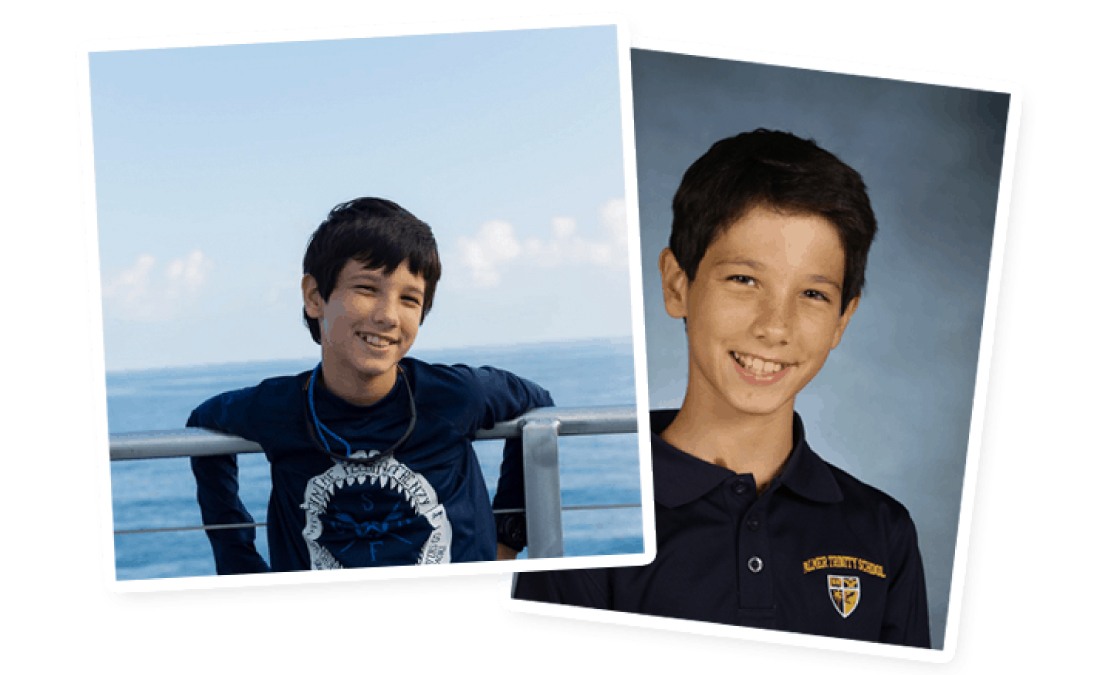Simon Strong
It was intuition, nothing else. That’s how Anne Robertson recalls the moment she sensed that her dream house, on a beautiful two-acre property with a grass tennis court and pool house in the town of New Canaan, Connecticut, was in fact a house of nightmares.
Together with her Wall Street husband and their three young children, they had bought the property after being enchanted by it under deep snow in the middle of winter. “It was everything I wanted. It would be the Robertson compound, where my children and my children’s children would come back,” says Anne.
But Anne, a member of the Reynolds Aluminum and Reynolds Tobacco families and whose uncle Julian Sargeant Reynolds, the former Lieutenant Governor of Virginia, who had died of a massive brain tumor at the age of 34, sensed something was wrong.
Already very conscious of how cancer had taken the lives of several family members and wondering if she might in some way be “predisposed” and perhaps her children more so, Anne’s worst fears were realized at a lunch with neighbors shortly after moving in.
“I was told that the father, the mother and a son who had previously lived at our house had all died there. I remember going to a library to research, because it was pre-internet, a different era. I was beginning to hear about pesticides and, because we were on a well, we were exposed to runoff from the valley if other people sprayed them.”
So began Anne’s exploration of cancer-causing environmental toxicants, leading some 20 years later to her becoming a driving force in the Childhood Cancer Prevention Initiative, launched last year and including some 60 organizations, among them The Oliver Foundation.
After a further chance meeting, this time in Vermont with Elizabeth Sword, executive director of Healthy Child, Healthy World, Anne set about testing her home and found radon, lead paint, and pesticides in the well water.
“Then I started to buy organic food, and I stopped spraying Roundup, pulling out weeds with my hands instead. We filtered the well water. We stopped using chlorine in our pool. My eldest son had had a lot of infections and health issues, and as I started to buy healthier products, his health improved.”
“Healthy Child Healthy World had celebrity ties to leverage, with Olivia Newton-John, Meryl Streep and Kelly Preston as spokespeople. We were pushing brands and companies to become less toxic, and supporting brands that were non-toxic. Our logo would go on their packaging – not as a license but a brand endorsement.” (Tragically, Kelly Preston, the wife of John Travolta, died aged 57 of breast cancer in 2020.)
As she set about seeking to raise awareness and to make a difference in children’s health more widely, Anne was introduced to Dr Philip Landrigan, the epidemiologist and pediatrician who was Director of the Children’s Environmental Health Center and Chair of the Department of Preventive Medicine at Mount Sinai Medical Center. Dr Landrigan’s studies of blood lead levels had played a key role in the removal of lead from gasoline – and the federal ban on lead paint.
“Phil had started Mt. Sinai’s Children’s Environmental Health Center and I became one of the founding board members. Phil’s team conducted pilot studies connecting environmental toxicants to the chronic illnesses, findng out the connections. The studies then got larger funding from the National Institute of Environmental Health Sciences, the National Institutes of Health, and the CDC.
“In addition to fundraising for pilot studies, my role was to work with the scientists so that the science was translated into an understandable form for families – delivering an educational platform and resources for parents to learn more about the environmental links to illnesses, including pediatric cancer. There was also advocacy work, helping to put together coalitions to pass federal and some state legislation.
Meanwhile, Anne had become acutely conscious of her own family’s unwitting role in generating environmental pollution. Her great-great uncle, Richard Joshua “R.J.” Reynolds, the son of a tobacco farmer, had founded R. J. Reynolds Tobacco Company in Winston-Salem, North Carolina, and created Camel cigarettes.
“My great-grandfather worked for RJR early on and was responsible for inventing the Camel brand. He left by 1912 and RJR died in 1918 of pancreatic cancer,” said Anne. “The company then passed to another family. The Camel advert ‘More doctors smoke Camels’ came much later, in the 1940s, in response to concerns about smoking and lung cancer raised by chest surgeons. The company created a medical relations division, advertised in medical journals, and paid for medical research avoiding the central health issue and citing it in its ads to undermine the emerging evidence.”
In the meantime, Anne’s great-grandfather, Richard Samuel Reynolds, had launched a company providing the tin and lead foil for cigarette packaging, before switching to aluminum foil – and building Reynolds Metals into the second-largest aluminum company in the US after Alcoa.
“People were not aware of environmental issues as they are now. They didn’t realize the health impact of the air and water emissions and the hazardous waste, never mind how aluminum can be neurotoxic,” said Anne. “My great-grandfather saw himself as an anti-monopolist. When he was with my great-great-uncle he went after James Buchanan Duke [American Tobacco Company], the biggest tobacco monopolist at the time, and then he went after Alcoa.”
In the run-up to World War II, Richard Samuel Reynolds discovered Alcoa was stockpiling aluminum – used for aircraft and weaponry – in Nazi Germany. “He was given a congressional award of honor for sounding the alarm bells and for not profiteering. He bet every penny he had on mining bauxite for aluminum in Arkansas and a manufacturing facility in Alabama, forcing down the price so helping to win the war. And the government launched a huge antitrust lawsuit against Alcoa.”
For Anne, it is her great-grandfather’s ardent promotion of the redistribution of wealth and the breaking down of monopolies that resonates most with her today. “As a child he famously gave back his marbles after winning. He said monopolies were delusions of grandeur. What we now see is a consolidation of power from the seed to the chemical companies. There are just the three: Syngenta Group China, DowDuPont and Bayer-Monsanto.
“They buy the science, they buy the media. Just like the tobacco companies. They follow the same tobacco playbook of manufacturing doubt about the toxic effect of their seeds and their chemicals on human health. When government regulators become these companies’ executives, and the executives the regulators, that is a monopoly problem – of power.
“Children’s health is in decline. They are born with between 200 and 300 industrial pollutants in their blood, setting them up for cancer or diabetes or a range of other non-infectious illnesses and conditions that are all skyrocketing. The pollutants can be dormant for decades, but those early infant and prenatal exposures are critical.”
In 2020, Anne set up Toxic Free Future For Our Children gathering together scientific, economic and legal risk analysis and media teams to focus on the six main groups of the most heavily-used chemicals – pesticides, PFAS ‘forever chemicals’, anti-microbials, flame retardants, plasticizers and endocrine-disrupting chemicals, solvents & heavy metals.
“We need to focus on prevention and not just cure. We need to reverse the popular view that prevention is not worth bothering with. Only by regulating toxic chemicals and building companies that are non-toxic will we begin to reverse the decline in children’s health. It is a systemic problem requiring businesses, policymakers, scientists and advocacy groups to work together – and that is why we formed the Children’s Childhood Cancer Prevention Initiative.”
It is Anne’s uncle, Julian Sargeant Reynolds, whose early death from a tumor shocked her into realizing the dangers from our toxic environment, who has also inspired her because of his passion for creating civic and economic opportunities in Virginia. “He championed many African American legislators and helped to pave the way for Douglas Wilder to become the first African American Governor in the country.”
As for Reynolds Metals, in May 2000 it was acquired by its 20th-century nemesis, Alcoa, the world’s largest aluminum producer, for $4.4 billion. Alcoa might have sealed its monopoly but Anne represents a new generation of the Reynolds family – continuing not only to question the power of monopolies but also to tackle environmental pollution itself.



0 Comments